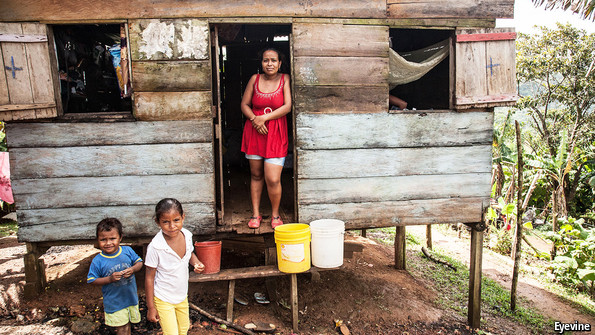I found this article in The Economist of interest about the disparity in the health care service between the rich and poor in Central America and how an alliance of billionaires and bureaucrats is making a difference.
IN FRONT of the skyscrapers on the esplanade in Panama City, joggers puff along a path in the morning heat, as men and women do push-ups and bench-presses. In this part of Panama the enemies are fat and diabetes. But a short flight away indigenous communities living amid fearsome overcrowding on the tropical islands of Guna Yala (formerly San Blas) are so poor and malnourished that their young children can die for lack of a boat fare to get to the nearest health clinic. Parts of Guna Yala are, says an official from the Inter-American Development Bank (IDB), “hell in paradise”. This disparity between the rich-world health worries of city dwellers and the parlous situation of the poorest is prevalent across Central America. But until recently the IDB says it has never been measured or dealt with directly.
Enter two of the world’s richest men, Bill Gates, a founder of Microsoft, and Carlos Slim, a Mexican telecoms magnate. Together with the government of Spain, the IDB and eight regional health authorities, their charitable foundations set out in 2010 to survey and tackle the problem. The alliance between billionaires and bureaucrats has been fruitful. It has revealed the depth of the inequality and shown how entrepreneurial thinking can be applied to seemingly intractable problems.
The programme, called Salud Mesoamérica 2015, began by introducing the first large-scale health surveys of the poorest one-fifth of the population in Panama, Costa Rica, Nicaragua, Honduras, El Salvador, Guatemala, Belize and the southernmost Mexican state of Chiapas. The results, from surveys of more than 20,000 households by the University of Washington’s Institute for Health Metrics and Evaluation, revealed what Julie Katzman, the IDB’s second-in-command, calls “the tyranny of the law of averages”.
In all of the poorest areas levels of stunting, a harbinger of ill health, were well above national averages (see chart). In indigenous parts of Guatemala, for example, rates of stunting and anaemia among infants match those of some of the poorest areas of sub-Saharan Africa. In remote Panamanian areas like Guna Yala less than 10% of children under five are fully vaccinated. Mothers of the poorest children in Panama, Guatemala and Chiapas have far less access to family planning and hospitals than the rest of their compatriots. Yet because national averages show impressive improvement, those on the margins receive scant attention.
Armed with the data, the donors and the IDB agreed on stringent 18-month targets for improvement with the eight regional health authorities, giving them the freedom to design their own approaches to meet the goals. They offered a financial incentive. The total programme was backed with $142m from the donors, and $54m from local governments. Those countries that met their targets were to receive half of their own disbursement back for unrestricted use within the health services.
In all countries, officials say, there were striking improvements, but not everyone met the targets. Honduras, Nicaragua and El Salvador did. Chiapas, Guatemala and Belize did not. Results are still not available for Costa Rica and Panama. Health authorities found creative ways to meet the tight deadlines. El Salvador, for example, took just four months to grant regulatory approval for distribution of multivitamins to the poor. Women in remote villages in Nicaragua who had given birth to more children than they had wanted—because of the huge distances they needed to travel to obtain contraceptives—nominated one person to be paid a stipend to make the journey on their behalf.
IDB officials, though advocates of “results-based financing”, say money was not the only motivator—indeed the cost of the programme was less than 1% of the region’s total health spending. National pride was also at stake because countries competed to meet the targets. One called it the “Concacaf of health”, after the region’s World Cup qualifying tournament.
The health officials of the countries have since met in Panama City to swap ideas. Those whose countries missed the targets can improve their performance and move on with the other countries to a more exacting set of 18-month targets that have fresh incentives. The biggest challenge of all will be to keep the programme going without the billionaires’ support. But if the lesson is learned that averages should not be the sole basis for making policy decisions, it will have been a step in the right direction.
